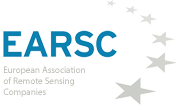I am convinced that one of the biggest hindrances to the uptake of geo-information comes from barriers within organisations. Often, we hear it described as “lack of user awareness” – which it is – but it goes deeper than that and requires considerable effort, time and patience to solve. Overcome these barriers, and the potential for the uptake of EO services becomes enormous. But how to tackle this problem is less obvious.
In our work looking at understanding and measuring the value coming from the use of EO - which goes under the name of SeBS (Sentinel Benefit Studies) - we work with key users in many different and varied organisations. For anyone who is unaware, we take a value chain approach meaning we start with a single product or service which is being used by a primary user and then analyse the impact this is having on the activities of the primary user, on the consequences for their customers/stakeholders and on the citizens of the country concerned. But having the right primary user is fundamental and tricky.
In so many cases, something goes wrong. The primary user, working with an EO service supplier, has built up knowledge and experience of how the EO service can fit into the organization’s processes. This is critical to understanding how the organization is benefiting. But what happens when the organization changes?
In around half the cases we have worked on, during the time it takes for the analysis (usually around 6 months), either the person has changed job, or the organization structure has changed meaning that our champion user has a new boss. Each time, we have to educate a new person who has none of the background or the persons themselves must educate their new hierarchy. In about one third of the cases, this leads to a blockage where the new hierarchy does not see the benefit of the analysis. The support of the hierarchy has become one of the key factors to confirm before we take on a case. Even so, it often goes wrong.
This shows clearly the problem; the use of EO is not embedded in the organization but in a few people within it. People change and the support changes. It appears that it requires a quite complex combination of skills, determination, and character to bring new technology – especially one which is not known through consumer applications – into current use in a company. It is even more difficult in public bodies which are very traditional in outlook.
I mention consumer applications and I could probably also include business applications of IT, since these are widely known if not fully understood. So, if a new IT expert advocates the use of Zoom, or even Teams, for teleconferencing, then the manager who decides is either familiar with it from home use or it is Microsoft and no-one gets fired for choosing Microsoft.
But when we come to geo-information, whilst managers may be familiar with maps, they are not familiar with maps showing lots of coloured dots designating where the ground is moving (InSAR) or of shaded areas in fields. Hence, the champion advocating for the introduction of the new technology has a much harder job, selling the solution to their internal management. Only if the benefit can be demonstrated quickly and positively can our champion convince their hierarchy that it is a useful tool for the organisation to adopt. Even then, internal politics between different departments can hinder the spread of new ideas.
This situation has been very much to the fore in some recent cases which we have analysed. One solution is to improve communication, as I wrote about recently. Another is to provide more resources to help our champion garner internal support. The SeBS case studies we believe do help in this respect by providing a story and clear evidence of the value. I should welcome any further ideas and suggestions on what more EARSC can do to help in this respect.

This page has no comments.